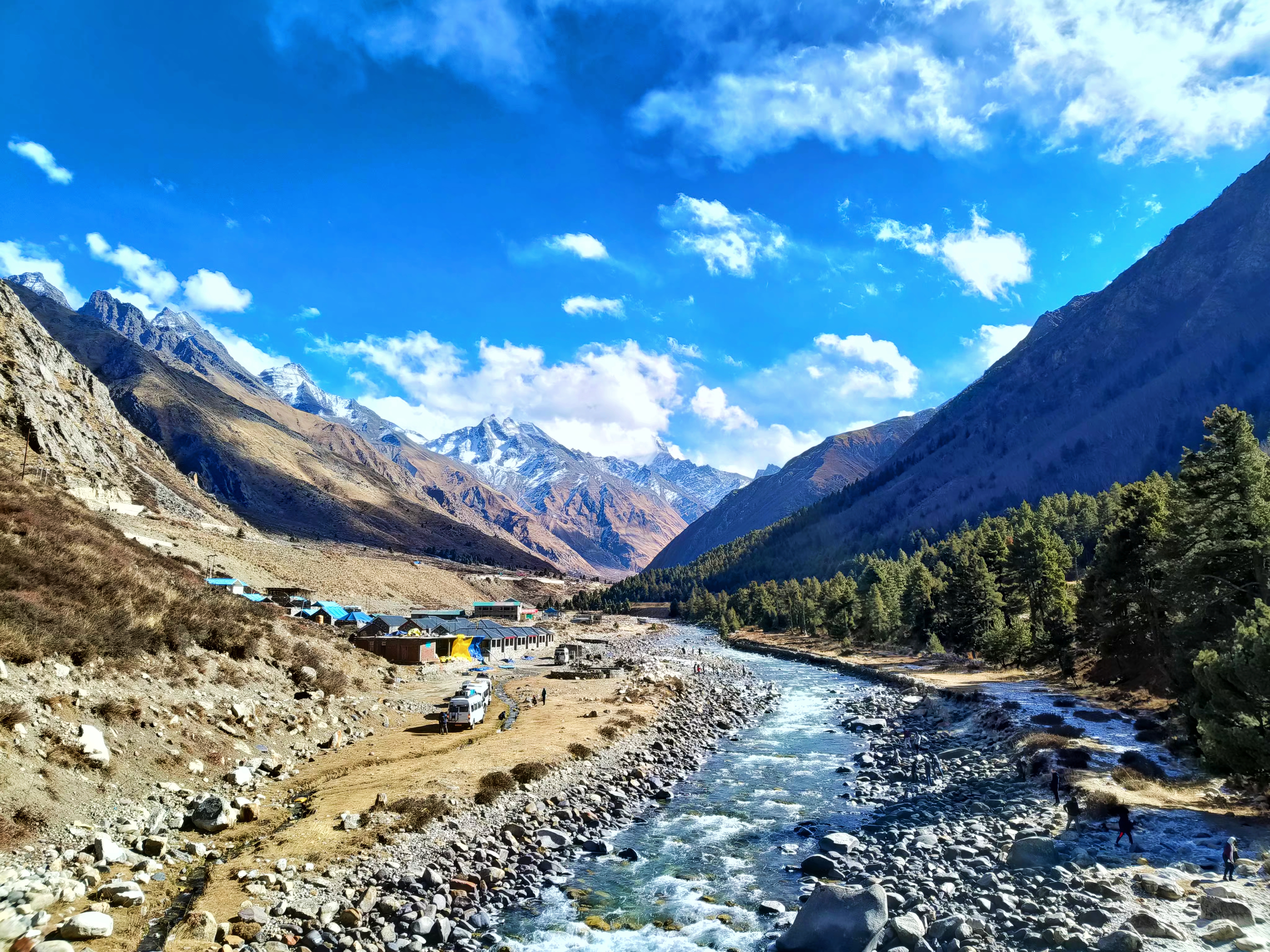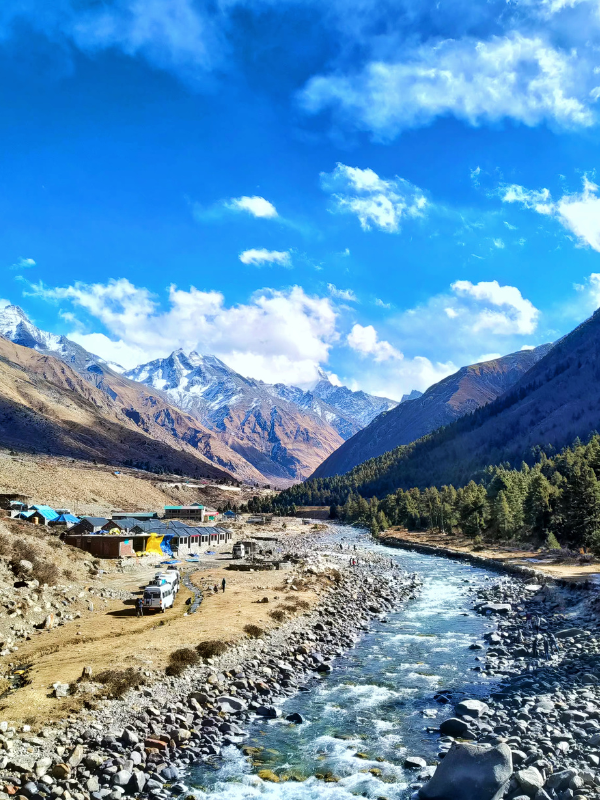

By Astha Singh
Getting lost in cold desert
Spiti Valley is a cold desert located in Himachal Pradesh at an altitude of around 14,000ft. The valley is scarcely populated but is home to some of the best heritage sites—not only in the Subcontinent and Asia but also in the world.
Our journey starts from
Shimla, from where we headed to Sangla in Kinnaur district, via Kufri, Narkanda
and Rampur, on the way learning about how premium apples came to India (their
seeds were transported in a fountain pen by Satyanand Stokes, the American who
fought for India’s freedom). The roads then led us along the Sutlej, across
Karcham Dam and through Kinnaur gate. And by the time we reached Hotel Sangla
Mansion, it was 8 pm. Beyond this point, we were informed, there is no running
water.
Next morning, we woke up to a
spectacular view of mountains resplendent in the white of snow and the green of
forests. Then it was time to make our way to the next point, Chitkul (11,400ft)
in Baspa Valley, also known as the last village before the Indo-Tibet border. I
went down the valley, where the Baspa River, clean and dreamy, flowed—this
scene is the inspiration behind the scenery we would draw as kids. Snow was
scattered here and there and the sun was shining brightly, though the
temperature was as low as -4°C, with a chilly breeze brushing your face. And
though the conditions were extreme, the locals were not in the least affected.
They are extremely warm and friendly, and will happily answer your questions.
I went to explore the
village, which has a very old temple dedicated to a goddess (I couldn’t find
out her name as the shrine was closed), and a monastery, which also looked as
if it had been around for many centuries. While in Chitkul, do visit ‘Hindustan
ka Aakhri Dhaba’, and Sangla Market on the way back. The villagers have a
unique taste in food, their meals containing plenty of turmeric and a lot of
butter (the latter probably to keep them warm). We spent some time in the
market before continuing on our journey to Nako.
Situated in Hagrang Valley in
Kinnaur district, Nako is a hamlet of just 572 people. But it presented me with
one of the most divine experiences of my life, when I stepped out at 6:15 am to
a view of snow-capped mountains glistening in the crisp cold of the morning—an
experience so overwhelming that it brought tears to my eyes. Yet, even more
beautiful was feeling those tears turn into ice pearls on my cheeks, which made
me smile.
The monastery in Nako is very
small but uniquely lovely. For me, though, the main attraction was the lake. It
was frozen but not hard enough, so there was a thrill skating on it knowing
that the surface could break any time. We climbed up to a viewpoint (whose name
I can’t remember), and a little above that was a temple dedicated to the
people’s ancestors. Here, people had left their wishes in the form of stones.
We finally entered Spiti
Valley, and Lahaul-Spiti district, through the village of Samdo. While we
couldn’t take photographs due to the presence of an Army camp, we got to
enjoy chai and jalebi in a canteen, where we
were also treated to a stunning view of the Spiti River in full spate, the sun
sparkling off its turquoise waters. Next stop was Giu, known for its proximity
to the Indo-China border (which is why it is guarded and controlled by the
Indo-Tibetan Border Police force). The monastery here is also a prominent
heritage building, but Giu is best known for having the naturally mummified
body of Lama Sangha Tenzin. It is said that as long as the mummy is in its
place, nothing can harm the people of Spiti Valley, not even a natural
calamity.
Our next stop was Tabo, where
the main attraction is the monastery, also known as Ajanta of the Himalayas.
Built around 996 AD, all Tabo’s nine temples are made of mud; we could only
enter one as the others were closed. Lunch here was momos, the best I ever had.
Then on our way to Dhankar Monastery, we took another, closer, look at Spiti
River; it was every bit as beautiful.
Unfortunately, we couldn’t
catch the sunset at Dhankar as we reached a little late but still, the lookout
here offered us an amazing vista of the whole valley, which looked a little
different from this vantage point. By 7 pm, we were in Kaza, which boasts the
world’s highest retail outlet, run by the Himachal Pradesh State Civil Supplies
Corporation. After a wander through the local market, we decided to rest
because there was much to cover the next day, including Langza village.
If you Google Spiti Valley,
the first picture you’ll get is that of a statue of the Buddha in Langza,
located at 14,300ft. We then proceeded to Tashigang village (site of the
highest polling station in India), and Kokim, the village with the world’s highest
motorable road. At the next stop, Hikkim, is the highest post office in the
world, from where we sent postcards to friends and families, though with the
temperature a bone-chilling -7°C, it was difficult to write down the addresses!
Still, we bought stamps, had some tea, and moved on.
Onwards to Key, site of the
largest monastery in Lahaul-Spiti district, and also recognised as an education
hub for monks. Though many monks migrate to Kerala during winters, there were
still a few around to show us the murals, thangkas, and some rare manuscripts.
But the best thing about Key Monastery was its meditation hall, whose vibes
were enough to rejuvenate us for the remainder of our journey. A climb of some
400ft-500ft took us to a prospect that offered a breathtaking view of the
monastery, and from here we admired the setting sun painting the sky a golden
hue. Our halt for the night was in Chicham village, where we beheld a
to-die-for night sky. While we were able to identify constellations, it was
challenging to stay outdoors, what with the temperature a freezing -23°C, which
felt even colder due to a breeze. After stargazing for 30 minutes, we went to
sleep.
Next morning, we set off for
Kalpa, the last stop in Kinnaur. After seeing Chicham Bridge—Asia’s highest
suspension bridge—we took in some more fantastic views of Spiti River while
passing through scenic routes. The night was spent in Hotel Kalpa Mansion,
which afforded us a spectacular panorama of Kinner Kailash. After marvelling at
the sunrise here, we ate a healthy breakfast of parathas, and
passed the rest of the day taking in the sights of Kinnaur, including suicide
point, the gate, the hanging bridge, and the most well-known one, Khab Sangam,
the place where the Spiti meets the Sutlej. Here, you can see two bodies of
water—each a different colour—merging into one, to create beautiful hues of
brown and turquoise.
Because it wasn’t the
easiest to navigate, the entire valley route offered an adrenaline rush for the
intrepid traveller. To sum up, Spiti makes for an incredible destination for
those who love exploring the wilderness. Best of all, it is not crowded, and
still has its natural charm intact.